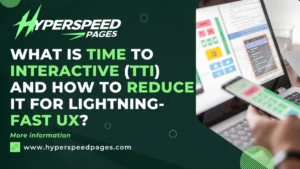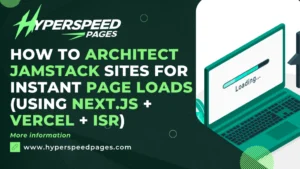
A well-optimized, high-quality landing page can be the difference between converting a lead and losing them to a competitor. But how do you ensure your business’s best insurance landing page service that stands out, engages visitors, and drives conversions?
From design and content optimization to technical SEO and user experience (UX) enhancements, we’ll cover everything you need to create a landing page that not only ranks well on Google but also converts visitors into loyal customers.
Understand the Goal: Conversion-Centered Design
The primary objective of your business insurance landing page is to generate leads and drive conversions. This means guiding visitors seamlessly towards a desired action, whether it’s requesting a quote, downloading a brochure, or contacting your sales team. Every element on your landing page should contribute to this overarching goal.
Why Your Business Insurance Landing Page Matters
- First Impressions Count: Your landing page is often the first interaction a potential client has with your brand. A professional, trustworthy, and engaging page builds credibility.
- Conversion Hub: A well-designed landing page is optimized to guide visitors toward a specific action, such as requesting a quote or contacting your team.
- SEO Benefits: A high-quality landing page can rank well on search engines, driving organic traffic and reducing your reliance on paid ads.
- Competitive Edge: In the crowded insurance market, a standout landing page can differentiate your business from competitors.
Now, let’s explore actionable steps to improve your business insurance landing page.
1. Headline and Subheadline
Your headline is the first thing visitors see, and it must immediately capture their attention. A strong headline should:
- Be Clear and Concise: Avoid jargon and clearly communicate what you offer.
- Highlight Benefits: Focus on how your business insurance solves the visitor’s pain points.
- Include Keywords: Incorporate relevant keywords like “business insurance” or “commercial insurance” for SEO.
Example Headline:
“Protect Your Business with Tailored Insurance Solutions – Get a Free Quote Today!”
Subheadline:
“From small businesses to large enterprises, we offer comprehensive coverage designed to safeguard your assets and future.”
2. Optimize for SEO
Search engine optimization (SEO) is crucial for driving organic traffic to your landing page. Here’s how to optimize your page:
a) Keyword Research
- Use tools like Google Keyword Planner, Ahrefs, or SEMrush to identify high-volume, low-competition keywords related to business insurance.
- Target long-tail keywords like “affordable business insurance for small businesses” or “commercial liability insurance for contractors.”
b) On-Page SEO
- Title Tag: Include your primary keyword and keep it under 60 characters.
- Example: “Business Insurance | Comprehensive Coverage for Your Company”
- Meta Description: Write a compelling meta description (under 160 characters) with a call-to-action (CTA).
- Example: “Get tailored business insurance solutions to protect your company. Request a free quote today!”
- Header Tags (H1, H2, H3): Use headers to structure your content and include keywords naturally.
- Alt Text for Images: Add descriptive alt text to all images for better accessibility and SEO.
c) Content Optimization
- Create high-quality, informative content that addresses common questions about business insurance.
- Use bullet points, numbered lists, and short paragraphs to improve readability.
- Include internal links to other relevant pages on your website, such as blog posts or service pages.
3. User Experience (UX)
A seamless user experience is key to keeping visitors engaged and encouraging them to take action. Here’s how to enhance UX:
a) Mobile Responsiveness
- Ensure your landing page is fully responsive and looks great on all devices, including smartphones and tablets.
- Test your page using tools like Google’s Mobile-Friendly Test.
b) Fast Loading Speed
- Optimize images and videos to reduce file sizes without compromising quality.
- Use a content delivery network (CDN) to improve page load times.
- Aim for a loading speed of under 3 seconds.
c) Intuitive Navigation
- Keep the navigation simple and avoid clutter.
- Use a sticky header with clear CTAs like “Get a Quote” or “Contact Us.”
d) Accessibility
- Ensure your landing page is accessible to all users, including those with disabilities.
- Use high-contrast colors, readable fonts, and keyboard-friendly navigation.
4. Social Proof
Trust is a critical factor in the insurance industry. Use social proof to build credibility and reassure potential clients:
a) Testimonials and Reviews
- Showcase testimonials from satisfied clients, including their names, photos, and businesses.
- Highlight specific benefits they’ve experienced, such as cost savings or excellent customer service.
b) Case Studies
- Share detailed case studies that demonstrate how your insurance solutions have helped other businesses.
c) Trust Badges
- Display badges from industry associations, awards, or certifications (e.g., “A+ Rated by BBB” or “Certified Insurance Provider”).
5. Call-to-Action (CTA)
Your CTA is the gateway to conversions. Make it impossible for visitors to miss:
- Use Action-Oriented Language: Phrases like “Get a Free Quote”, “Request a Consultation” or “Protect Your Business Today” are effective.
- Make It Visually Stand Out: Use contrasting colors and place your CTA above the fold.
- Limit Choices: Avoid overwhelming visitors with too many options. Focus on one primary CTA.
Example CTA:
“Get Your Free Business Insurance Quote in Just 2 Minutes!”
6. High-Quality Visuals
Visual elements play a crucial role in engaging visitors and conveying your message:
- Professional Images: Use high-resolution images of businesses, insurance agents, or happy clients.
- Videos: Create short, informative videos explaining your services or showcasing client success stories.
- Infographics: Use infographics to simplify complex insurance concepts, such as coverage options or claim processes.
7. Simplify Forms
If your landing page includes a form for quotes or inquiries, keep it simple and user-friendly:
- Minimize Fields: Only ask for essential information, such as name, email, phone number, and business type.
- Use Smart Defaults: Pre-fill fields where possible (e.g., selecting “Small Business” as the default option).
- Add Privacy Assurance: Include a brief note about how you’ll use their data (e.g., “We respect your privacy and will never share your information”).
8. A/B Test Your Landing Page
Continuous improvement is key to maximizing conversions. Use A/B testing to experiment with different elements:
- Headlines and Subheadlines: Test variations to see which resonates most with your audience.
- CTAs: Experiment with different colors, text, and placements.
- Images and Videos: Determine which visuals drive the most engagement.
- Form Length: Test shorter vs. longer forms to find the optimal balance.
9. Monitor and Analyze Performance
Use analytics tools to track your landing page’s performance and identify areas for improvement:
- Google Analytics: Monitor metrics like bounce rate, time on page, and conversion rate.
- Heatmaps: Use tools like Hotjar to visualize how visitors interact with your page.
- Conversion Funnels: Identify where visitors drop off and optimize those sections.
10. Compliance and Security
In the insurance industry, trust and compliance are paramount:
- SSL Certificate: Ensure your landing page is secure (HTTPS) to protect user data.
- Privacy Policy: Include a link to your privacy policy and explain how you handle customer information.
- Industry Compliance: Adhere to regulations specific to the insurance sector, such as GDPR or HIPAA.
Common Mistakes to Avoid When Creating Business Insurance Landing Pages
When creating a business insurance landing page, avoiding common mistakes is crucial to ensure a positive user experience, maximize conversions, and drive business growth. Here are some common mistakes to avoid.
– Poorly Designed User Interface
Avoid using a cluttered, outdated, or non-intuitive design that can confuse visitors and lead to high bounce rates. Ensure your landing page has a clean, modern, and responsive design that provides a seamless user experience.
– Lack of Clear and Concise Messaging
Avoid using jargon, technical terms, or overly complex language that can confuse visitors. Use clear, concise, and compelling messaging that resonates with your target audience and communicates the value proposition of your business insurance services.
– Insufficient Trust Indicators and Social Proof
Avoid neglecting to include trust indicators like customer testimonials, reviews, and ratings that can establish credibility and trust with potential customers. Use social proof like industry certifications, awards, and recognition to demonstrate expertise and authority.
– Non-Optimized CTAs
Avoid using CTAs that are not prominent, clear, or actionable. Use CTAs that are visible, compelling, and actionable, using action-oriented language like “Get a Quote” or “Apply Now.”
– Slow Loading Times and Poor Performance
Avoid neglecting to optimize your landing page for fast loading times and performance. Use tools like Google PageSpeed Insights to identify areas for improvement and optimize images, code, and server response times.
– Non-Mobile-Friendly Design
Avoid using a design that is not optimized for mobile devices. Ensure your landing page provides a seamless user experience across various screen sizes and resolutions.
– Lack of Relevant and High-Quality Visuals
Avoid using low-quality, irrelevant, or outdated visuals that can negatively impact the user experience. Use high-quality, relevant, and engaging visuals that showcase your business insurance services and help visitors understand the value proposition.
– Inadequate Analytics and Tracking
Avoid neglecting to set up analytics and tracking tools to monitor the performance of your landing page. Use tools like Google Analytics to track key metrics like conversion rates, bounce rates, and average session duration.
– Non-Compliant with Regulatory Requirements
Avoid neglecting to ensure your landing page complies with regulatory requirements like GDPR, HIPAA, or industry-specific regulations. Ensure you have the necessary disclosures, disclaimers, and compliance statements in place.
– Lack of Continuous Testing and Optimization
Avoid neglecting to continuously test and optimize your landing page. Use A/B testing and analytics tools to identify areas for improvement and optimize your landing page for better performance and conversion rates.
Improving the quality of your business insurance landing page is a multifaceted process that requires attention to detail, a deep understanding of your audience, and a commitment to continuous optimization.
Remember, your landing page is a reflection of your brand. Invest the time and resources to make it the best it can be, and you’ll reap the rewards in the form of increased leads, higher conversions, and a stronger online presence.




